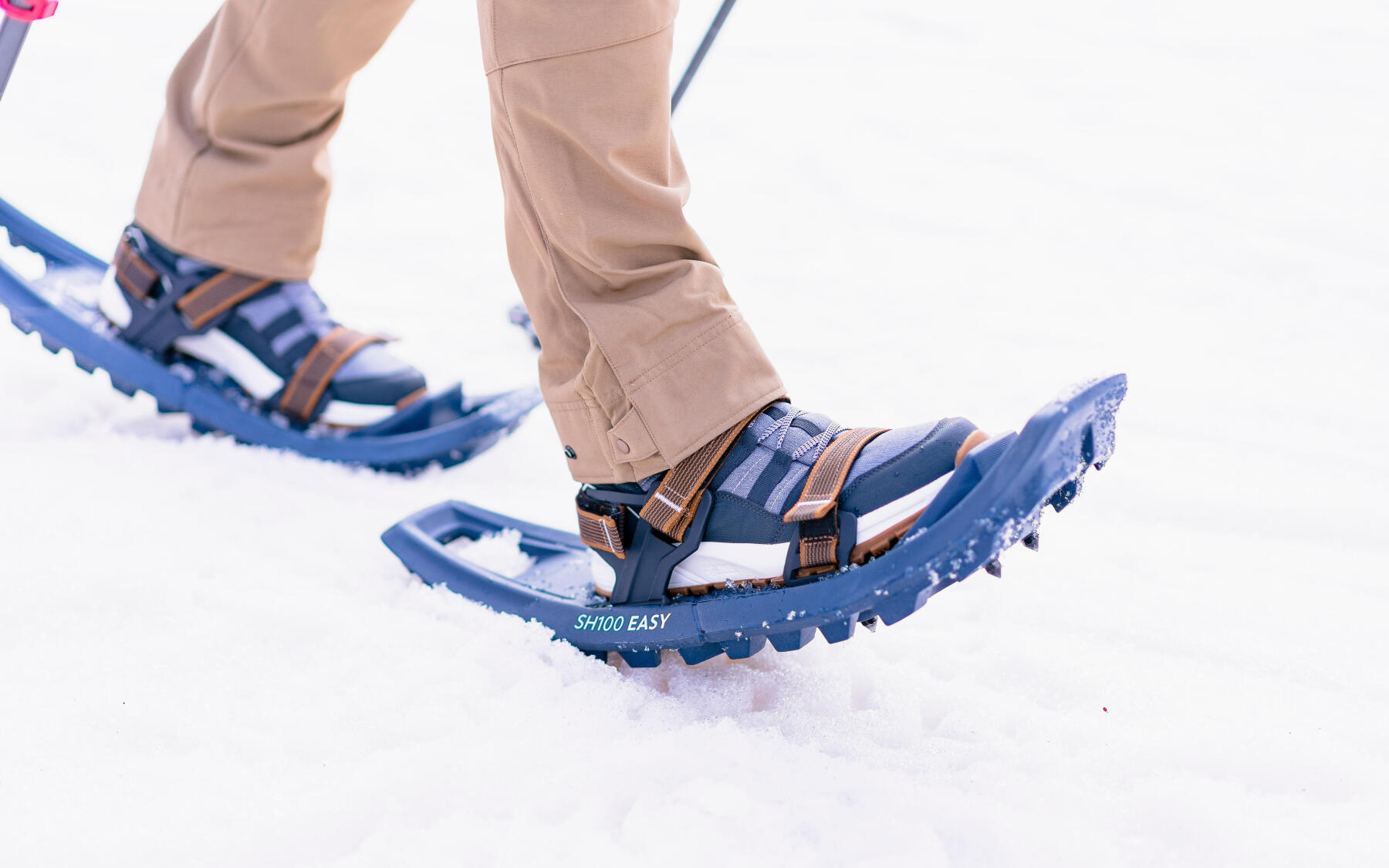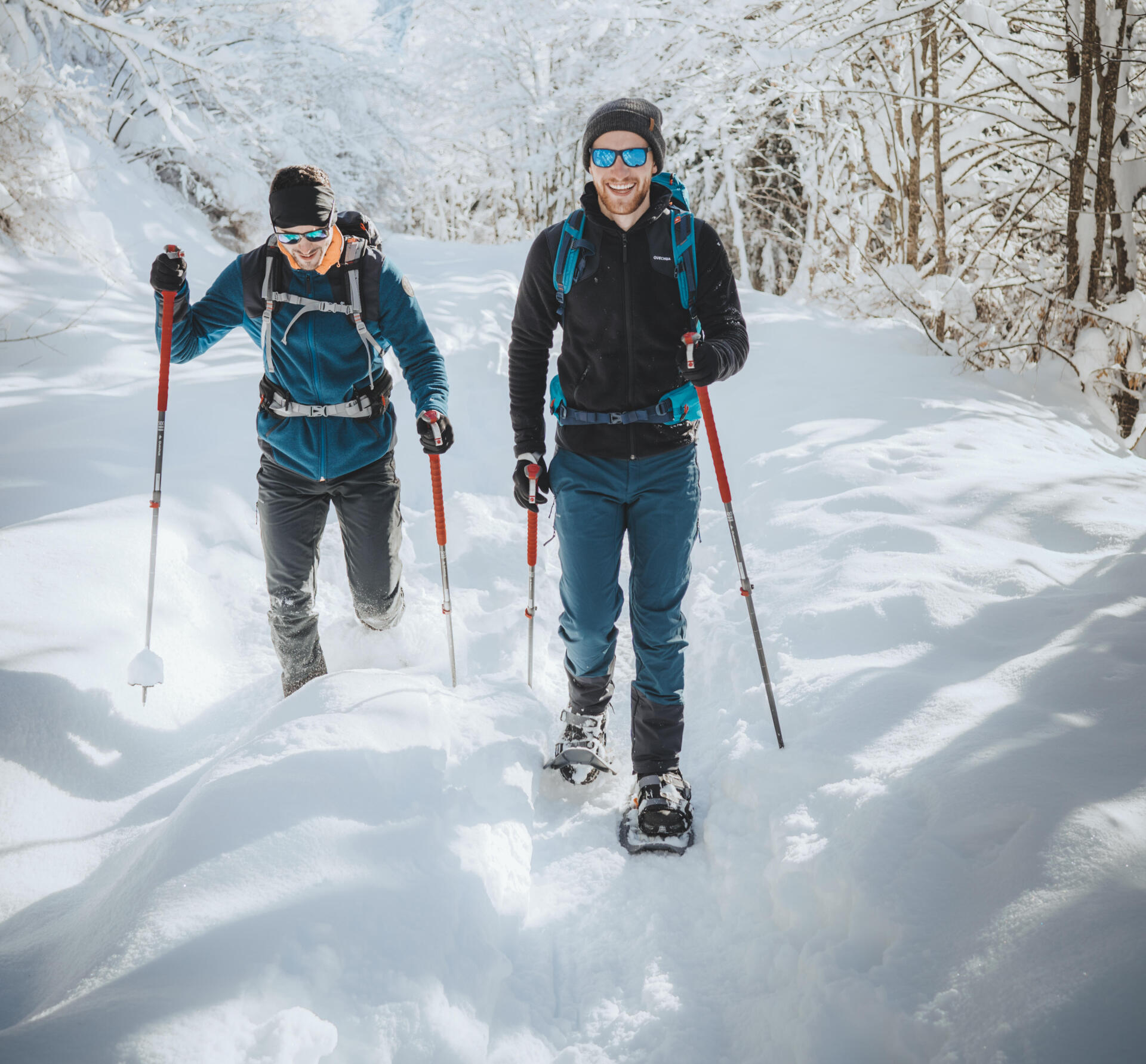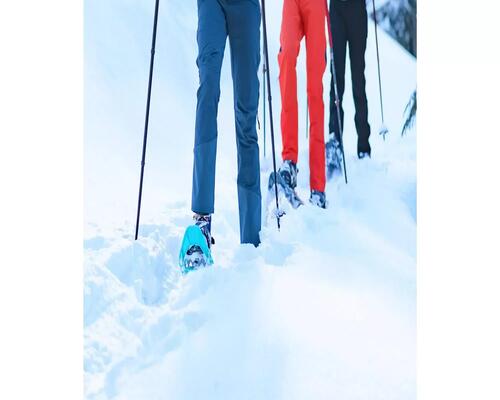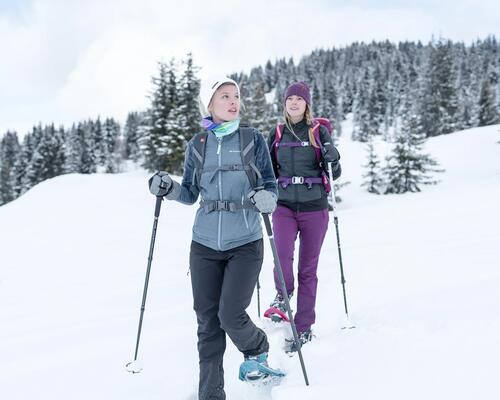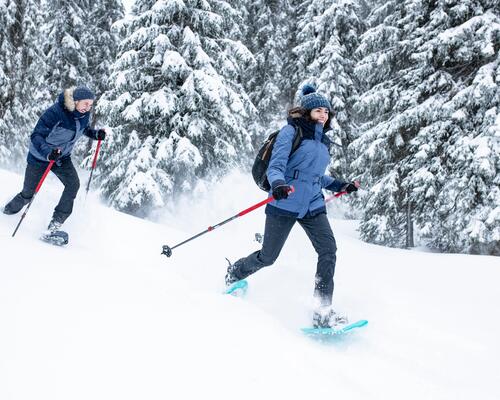ACCESSORIES FOR YOUR NEXT SNOWSHOE ADVENTURE: Which ones to pick?
When planning a snowshoeing trip, it's essential to bring along certain accessories to ensure your comfort and safety. Here are some things to consider:
1 - Gloves and mittens
Gloves and mittens are essential accessories to keep your hands warm and dry while snowshoeing. Gloves help prevent frostbite and other cold-related health problems. Additionally, they can be worn for all types of outdoor activities, such as skiing or skating, to protect your hands from potential injuries.
2 - Beanie hats or toques
In winter, wearing a hat is important to protect your head and ears from the cold. Body heat is often lost through the head, which can lead to significant heat loss if not protected. Additionally, the cold can irritate the skin and cause redness or chapping, especially on the ears. Our hats are designed for all your activities and will keep you warm and comfortable in any weather.
3 - Sunglasses
Protecting your eyes during winter is important as the sun's intensity can be just as harmful as in summer. The reflection of UV rays from the snow and ice can cause significant damage to the skin and eyes. Wearing sunglasses or ski goggles can help mitigate these effects. Furthermore, the low sun during winter can be more challenging to look at without adequate protection, which can cause eye strain, discomfort, and potential vision problems in the long run. Therefore, it is essential to prioritize eye protection during winter activities, especially in snowy and icy conditions, to ensure optimal eye health and safety.
4 - Hiking poles
Hiking poles are essential equipment for snowshoeing in winter as they provide valuable support while walking on snow and ice. The distribution of body weight on the sticks rather than on the legs can be beneficial, especially for people with back or knee problems. In addition to offering extra support, hiking poles can also be used to test the depth of the snow and help navigate safely in rugged terrain. By providing stability, balance, and reducing the impact on joints, walking sticks are a valuable accessory for anyone who loves to explore winter landscapes while minimizing the risk of injury or strain.
5 - Waterproof hiking shoes and boots
When snowshoeing in winter, wearing waterproof hiking shoes and boots is critical to protect your feet from snow and water infiltration. The melting snow and puddles encountered on the trail can make your feet wet and cold, causing discomfort and increasing the risk of frostbite, which is a serious and potentially dangerous condition. Investing in waterproof hiking shoes is a smart choice, as they provide both comfort and safety. With the right pair of shoes, you can enjoy your winter hikes without worrying about wet and cold feet, allowing you to fully embrace the beauty of the winter landscape.
6 - Backpacks
Hiking backpacks are a must-have for snowshoeing in winter, as they enable you to carry all the necessary equipment and supplies for your excursion. These backpacks are ideal for storing water, food, spare clothing, a first-aid kit, and other essential gear. Some backpacks may even come equipped with waterproof compartments that protect your personal belongings from snow and moisture, keeping your items dry and secure.
7 - GPS and compass
When snowshoeing in winter, GPS and compass are essential tools for navigation and orientation in the environment. In winter, snow and fog can obscure familiar landmarks, making it easy to get lost. GPS enables tracking of the planned itinerary and identifying the exact position on the map, while the compass can be used to determine the direction to follow. By using these tools, you can stay on track and minimize the risk of losing your way.
Another tip, don't forget to check the weather conditions and plan for the right clothing.



